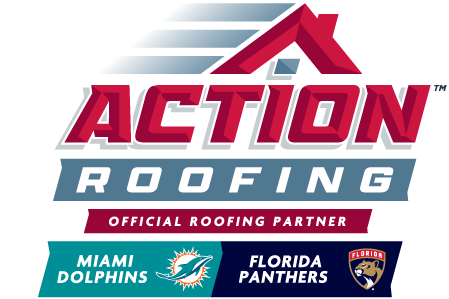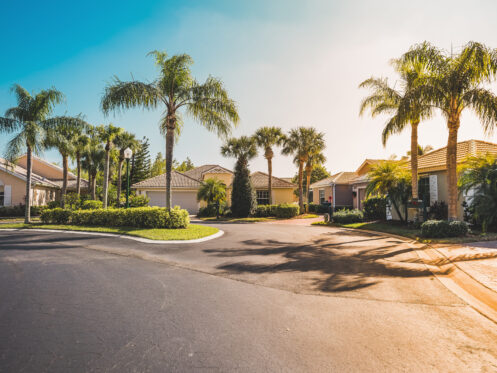Living in Fort Lauderdale means your roof faces unique challenges, from heavy storms to high humidity. These environmental factors can lead to common roofing issues that homeowners must address. Whether it’s wear and tear from the weather or maintenance neglect, understanding these problems can help you keep your roof in top shape.
At Action Roofing in Fort Lauderdale, FL, we specialize in identifying and fixing roofing issues before they become major headaches. Let’s explore the most common roofing problems for Fort Lauderdale homes and how you can prevent them.
1. Hurricane and Storm Damage
Living in a place that gets its fair share of heavy storms and hurricanes means your roof is more exposed to damage. High winds, intense rain, and flying debris can quickly take a toll on roofing materials. You might find that shingles have blown off, the flashing around chimneys and vents has come loose, or worse, that your roof is leaking. When a major storm passes through, it’s always a good idea to inspect your roof afterward. Even small leaks can lead to issues like mold or rot if not addressed right away.
For homes in areas that regularly experience severe weather, it’s important to make sure your roof is built to withstand storms. Consider stronger roofing materials, or if you live in an area with hurricanes, an impact-resistant roof that can stand up to strong winds and flying debris.
2. Leaky Roofs
Leaks can happen for several reasons, like worn-out shingles, cracked flashing, or even a poor seal around vents or chimneys. In a heavy rainstorm, you might not notice a leak until it’s too late — water can sneak through the roof and into your attic, leading to water stains on your ceilings, rotting wood, and even mold.
To avoid the headaches of a leaky roof, inspect it regularly. Look for signs like curling or missing shingles, cracks in the flashing, or any other damage that might let water in. If you notice something suspicious, get it checked out right away to prevent further damage.
3. Poor Roof Ventilation
Many homeowners overlook roof ventilation, but it plays an important role in keeping your home cool and dry. Proper ventilation helps control the temperature in your attic, helping to stop heat from accumulating. In the hot summer months, without good ventilation, the temperature inside your attic can rise dramatically, causing your air conditioning system to work overtime.
Bad ventilation can cause several problems, including warping shingles, shortened roof life, and higher energy bills. You can improve your roof’s ventilation by installing ridge or soffit vents, which allow air to move freely through the attic.
4. Roof Moss and Algae Growth
Moss thrives in shady, damp conditions, while algae can grow in areas where there’s little sunlight. Although this growth might seem harmless, it can lead to serious problems for your roof. Over time, moss can lift shingles, allowing water to get underneath and cause leaks. Algae can discolor your shingles, affecting the overall appearance of your roof.
To avoid this, you should regularly clean your roof to remove moss or algae. You can also use algae-resistant shingles or install copper or zinc strips near the top of your roof to prevent future growth.
5. Damaged or Missing Shingles
Missing shingles can make your roof prone to leaks, while damaged shingles can reduce the effectiveness of your roof. If you see shingles that are cracked, curled, or completely missing, it’s time to replace them.
Shingles are designed to protect your roof, but once they’re damaged, they can’t do their job properly. Replace missing or damaged shingles quickly to avoid further issues. If you have an older roof, you might want to consider replacing it entirely, as older shingles are more prone to damage.
6. Clogged Gutters
Your gutters do an important job: They channel rainwater away from your roof and foundation. When your gutters become clogged with leaves, twigs, and other debris, they can’t do their job properly. This can lead to water overflowing, which could damage your roof, siding, and foundation. In cold weather, clogged gutters can also cause ice dams to form, which can damage your roof.
To avoid this problem, clean your gutters often, especially in autumn when leaves are falling. If you live in an area with many trees, you may need to clean them more often. Installing gutter guards can also limit the amount of debris that gets into your gutters, making cleaning easier and helping your gutters function better.
7. Sagging Roof Deck
A sagging roof deck is a serious problem that can indicate structural issues with your roof. This can happen when the roof’s support system weakens, often due to prolonged exposure to water or the weight of heavy snow or ice. If you notice that your roof is visibly sagging, a professional should inspect it immediately.
A sagging roof deck can lead to major roof failure if not repaired. In some cases, it may require a full roof replacement or a major repair to the roof’s structural components.
8. Pest Infestations
Pests, like rodents and termites, can be a big problem for roofs. Termites, in particular, can cause damage to the wooden structure of your roof. Rodents, meanwhile, can chew through insulation and wiring, creating even more problems. Roofs are often an entry point for these pests, especially if you have cracks or holes in your shingles or flashing.
If you see signs of pests in your attic, like droppings, chewed wires, or nests, it’s important to fix the problem fast. A pest control service can help get rid of the pests and keep them from returning.
9. Improper Roof Installation or Repairs
Sometimes, roofing problems stem from poor installation. If your roof wasn’t installed properly from the start, you might begin to notice issues like leaks, poor insulation, or visible damage much sooner than you should. A roof that’s not installed properly can cause many issues later on, from structural issues to higher energy costs.
If your roof is less than 10 years old and already showing signs of damage, it might be worth having it inspected to make sure it was installed correctly. A reputable roofer can assess the installation and make any necessary repairs.
10. Roof Flashing Damage
Roof flashing is used around chimneys, skylights, vents, and other openings in your roof to prevent water from leaking. If your flashing becomes damaged or improperly installed, water can sneak under your shingles and cause leaks. Flashing is usually made of metal, so it’s vulnerable to wear and tear over time.
If you see signs of flashing damage, like rust or missing sections, it’s important to replace them before water starts leaking into your home. A roofer can replace the flashing or reseal it to keep your roof watertight.
Call Us Today
Your roof is vital in protecting your home, and staying on top of common issues can save you time and money in the long run. By addressing these problems early, you can extend the life of your roof and avoid costly repairs. If you’re ready to give your roof the attention it needs, reach out to Action Roofing today for an expert roof inspection. We offer roofing services for various roof types, including shingle roofing, tile roofing, metal roofing, and flat roofing.




